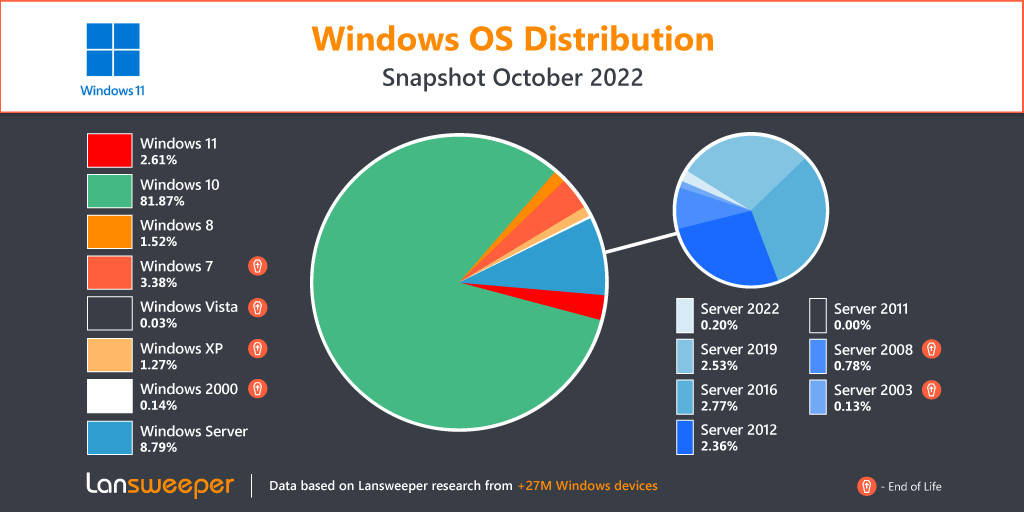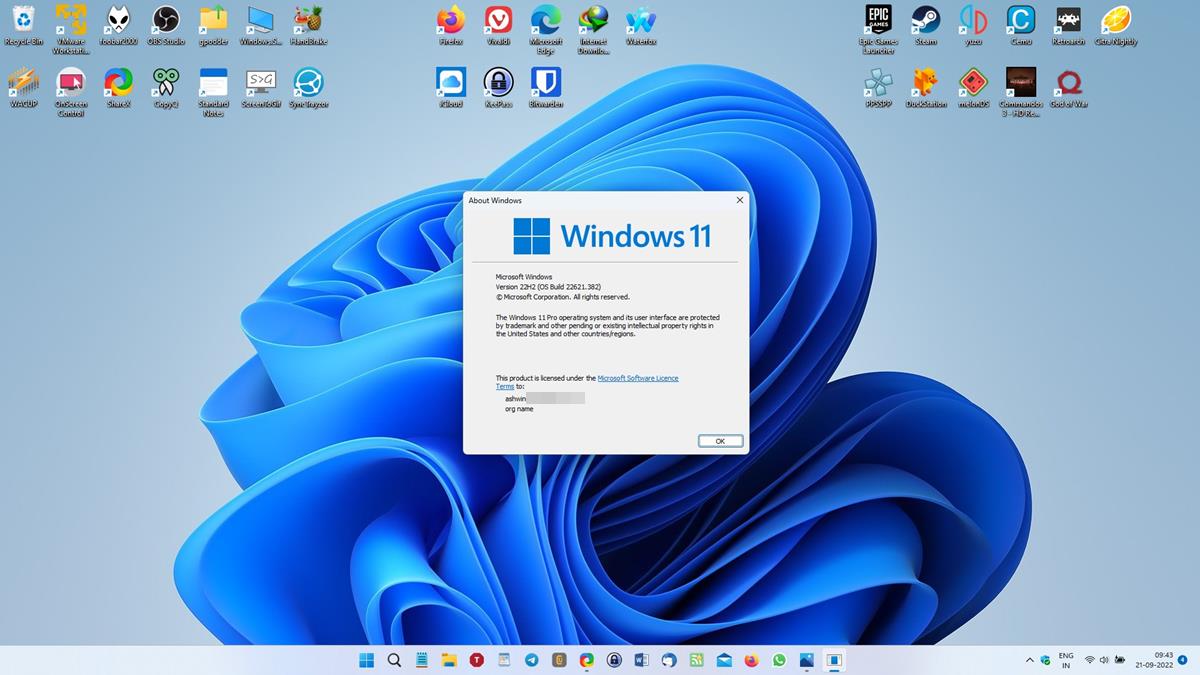Lansweeper published the results of a scan that it ran on about 30 million Windows devices from 60,000 organizations earlier this week. According to the results of the scan, Windows 11 was installed on just 2.61% of all devices. More than 42% of the scanned devices do not meet the system requirements of the Windows 11 operating system.
The report, which is available on the Lansweeper website, offers additional details. Lansweeper checked each device for CPU, RAM and TPM compatibility with Microsoft's Windows 11 operating system. Only 57.26% of checked processors meet the requirements that Microsoft defined when it released Windows 11; this means that 42.76% of devices do not meet the requirements currently. The 0.02% discrepancy is not explained.
For RAM, 92.85% of devices meet the system requirements of 4 gigabytes. It is interesting to note that more than 7% of all scanned devices run with less than 4 gigabytes of RAM. The Trusted Platform Module (TPM) requirement is met by 64.57% of tested workstations. An additional 20.77% did not have the functionality enabled or were not compatible, according to Lansweeper.
Compatibility drops even further for virtual machine workstations. CPU compatibility sits at 55.7% while RAM and TPM drop to 67.1% and 1.33% respectively. Lansweeper notes that passthroughs exist for TPM, but that these are rarely configured.

source: lansweeper
The adoption rate of Windows 11 was just 2.61% across all 30 million scanned devices. That's just 1.09% more than that of devices running Windows 8 and 1.32% more than devices running Windows XP. Windows 11 is trailing Windows 7's 3.38%, and far away from the commanding 81.87% of Windows 10.
Historically, organizations have been slow at upgrading systems to new versions of Windows. Many system administrators waited for the release of the first service pack before considering upgrading to a new version of Windows. Nowadays, Microsoft does not release service packs anymore. Feature updates, released once a year, are the next best thing, and it remains to be seen if the release of the first feature update for Windows 11 is giving adoption a much needed boost.
Closing Words
The new system requirements of Windows 11 are a major factor when it comes to the operating system's market share. A sizeable number of devices can't be upgraded, at least not via Windows Update, which limits Windows 11's growth potential. Customers whose devices are not compatible have only three main options: stay on the current version of Windows, upgrade to Windows 11 using a bypass, or upgrade hardware/buy a new PC.
The bypass option has the risk of not receiving any more updates associated with it. Microsoft stated in the past that it could not guarantee that incompatible devices running Windows 11 would continue to receive updates in the future.
Now You: do your devices run Windows 11 or an earlier version of Windows, or something else entirely?



3175x175(CURRENT).thumb.jpg.b05acc060982b36f5891ba728e6d953c.jpg)
Recommended Comments
There are no comments to display.
Join the conversation
You can post now and register later. If you have an account, sign in now to post with your account.
Note: Your post will require moderator approval before it will be visible.